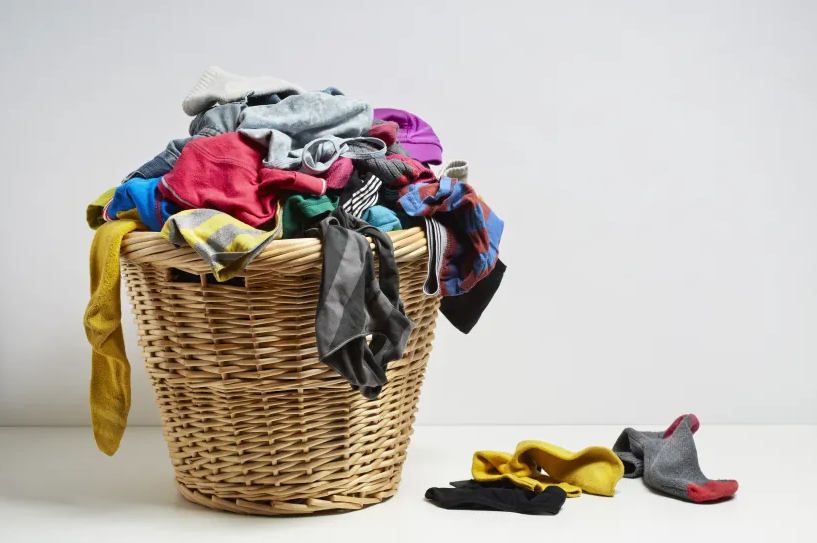What’s In Your Laundry Detergent (And What to Use Instead)
Let’s talk about something most people use every single week — but rarely think twice about: laundry detergent.
Those bottles lined up at the store promising “Mountain Spring” or “Fresh Breeze”? They’re full of synthetic chemicals, many of which aren’t just bad for your skin — they’re quietly wrecking the planet. It’s not a sexy topic, but it’s a meaningful one. Because when you wash your clothes, you’re not just cleaning fabric — you’re participating in a supply chain, a waste stream, and a cycle that affects water, wildlife, and your own health.
The Dirty Secrets of Conventional Detergent
We’re conditioned to think clean smells like perfume. But most mainstream detergents aren’t really cleaning — they’re masking. The ingredient list on a typical bottle is a toxic cocktail, disguised by vague words like “fragrance” or “brighteners.” Let’s break it down:
1. Surfactants
These are the workhorses — they loosen dirt and oil so water can rinse them away. The problem? Most are synthetic, petroleum-based (like SLS, SLES, or LAS), and harmful to aquatic life. Once they wash down your drain, they don’t just vanish — they accumulate in waterways, poisoning fish and disrupting ecosystems.
2. Optical Brighteners
These don’t actually clean your clothes. They just coat fabrics with a chemical that reflects blue light, tricking your eyes into thinking things are “whiter.” They’re not biodegradable, can cause skin reactions, and serve no real cleaning function.
3. Fragrance
This single word can hide hundreds of undisclosed chemicals — often including phthalates (linked to hormone disruption) and volatile organic compounds (VOCs) that irritate lungs and trigger allergies. If your clothes smell like a chemical plant, it’s because they basically are one.
4. Phosphates
Once widely used to soften water and boost performance, phosphates have been banned in many places because they cause algal blooms in lakes and rivers. These blooms suffocate aquatic life and throw entire ecosystems out of balance. Yet they’re still present in some products worldwide.
5. Preservatives
To keep the detergent shelf-stable, manufacturers often use harsh preservatives like methylisothiazolinone or formaldehyde releasers. These are linked to skin sensitivities, respiratory issues, and in some cases, carcinogenicity.
All that from a product you pour on the clothes that sit on your skin all day.
A Design Problem Hiding in Plain Sight
From a design standpoint, this is a broken system. It’s built around performance theater (things that look or smell clean), not actual health or sustainability. It’s meant to be disposable, forgettable, and tied to brand loyalty. And it’s wrapped in heavy plastic jugs that end up in landfills or oceans.
But here’s the thing: there are better ways. Cleaner ways. Smarter ways. You don’t have to buy into this system.
Five Laundry Brands That Actually Give a Damn
These companies are flipping the script — creating real solutions for people who want to live intentionally, not chemically.
1. Meliora Cleaning Products
Simple ingredients like baking soda and soap. No synthetic fragrances. No dyes. No greenwashing. They’re B Corp certified and come in recyclable steel canisters or refill bags. It’s clean, both literally and philosophically.
2. Tru Earth Laundry Strips
Strips you tear and toss in. No mess, no plastic, and way less shipping weight. They’re free of phosphates, parabens, and synthetic gunk — and they actually work.
3. Dr. Bronner’s Pure-Castile Soap
It’s not marketed as detergent, but don’t let that fool you. Dr. Bronner’s is 100% biodegradable and can handle most laundry loads when paired with vinegar or washing soda. Plus, they’re fair trade, organic, and wildly transparent about ingredients.
4. Molly’s Suds
Made by a mom and a pediatric nurse after a personal tragedy, this brand is all about safety. No endocrine disruptors, no carcinogens, just real ingredients like baking soda and salt. Powdered and powerful.
5. Blueland Laundry Tablets
Pre-measured tablets that dissolve cleanly with no junk. No artificial dyes, no petroleum-based fillers, no plastic waste. They’re also carbon-neutral and ship in compostable packaging.
What Clean Really Looks Like
You don’t need neon blue goo in a plastic jug to clean your clothes. You don’t need your laundry to smell like a fictional meadow. You just need a product that does its job — and doesn’t poison everything else in the process.
Making the switch to a cleaner detergent isn’t about being perfect. It’s about deciding to care. It’s about breaking the illusion that a strong scent equals a strong clean. And it’s about designing your life — even the boring parts like laundry — in a way that reflects your values.
Your home doesn’t stop at your walls. It extends to the water you send down the drain. To the fish that swim in that water. To the air your kids breathe. To the soil your clothes touch when they wear out.
Design better. Wash better. Live better.

Leave a Reply